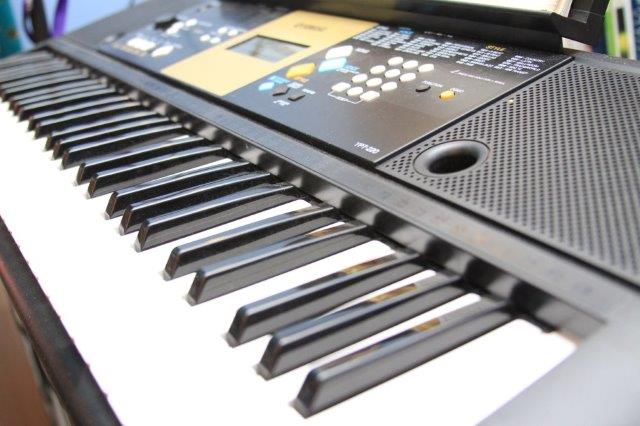About: My Way of Working |
My prime aim is to break down barriers to inclusive music practice. Some of these barriers were identified my Dr Wendy L Magee (2006).
These were high cost, high learning curves and compelixity, portability and set up times. These have now been countered by:-
1: Create bespoke musical instruments (using low cost, open source technology) on a case by case requirement.
2: In turn these devices are portable, inexpensive, quick to set up and with short learning curves.
Additionally:-
3: I rarely charge, what I request is feedback on how well it has worked to share with the assistive technology community.
4: I lend devices, when they are no longer of use, they are returned and I either re-lend a device or recycle their components.
5: Devices are only created if there is no retail / commercial alternative.
Using Open Source technology to make music playing accessible to all |
It's essentially a collection of STEAM projects. Using inexpensive micro-controllers (Arduino's and variants) or simple sound effects boards to support engagement in music. i.e. where an impairment or a lack of resources would otherwise deny. A STEAM project could be undertaken by all members of a year group. Using a micro-controller means no extra tablet or laptop is required.
|
 |
Philip Catterall In the1980s, I designed and developed training courses to help convert communication engineers from analogue to the new digital systems and later was responsible for the design and development of corporate scale training, pricing and billing systems. My more recent work on systems and contract management in health and social care has steered me in the direction of using cheap and powerful 21st century technology to find ways of making music accessible for people with disabilities.Very much helped out by fellow volunteers at The National Museum of Computing and the good folks at DM Labs. Oh, and I've been an amateur musician for many years. Contact:- contactamps@btinternet.com |
I am currently looking for a collaborator(s) to support field trials in the area of stroke recovery / rehabilitation.
About AMPs: How it Started
 |
 |
 |
Electronic Keyboard |
Guitar |
Musical Prosthesis |
| It can be daunting to play some musical instruments. There needs to be to a straight forward way of engaging people with music (for fun or therapy). This would in turn make it more accessible.The answer is a musical prosthesis (inspired by the 2012 Paralympics). | ||
| I've enjoyed playing music over many years. Back in in 2012 while overseeing contracts in the health and social care sectors I identified an issue .Various day centres had instruments sitting around not being played. | ||
| The people attending these centres had various impairments, either cognitive or physical abilities. As an amateur musician I felt it a real shame that the complexity instruments denied access to them for personal recreation and enjoyment. | ||
Magee [2014] identified a range of inhibitors to using assistive music technology:-
|
||
Key Points Accessibility: The dexterity required for keyboards and strings can be side stepped with the use of arcade game switches, alarm systems and smart phone compoents. All supported by open source (free) technology. Ease of use for the therapist and pupils: The aim is to support music therapist, their students or service users and support carer involvement i.e. to engage in music at any time for fun or therapy. That is not just an hour a week at a day centre ,but every day with carer support. Objectivity/Outcomes: The AMP's devices can deliver data logging to support research and funding applications with demonstrable outcomes. |
||
A musical prosthesis |
||
| The solution to this lack of accessibility came to me in a flash of inspiration after watching the Paralympics. This solution being to devise a "musical prosthesis". | ||
| This initially took the form of an adapter that could be plugged into a MIDI (musical instrument digital interface) enabled electronic keyboard. This device could play either two percussion sounds and up to four harmonic chords. A pair of rotary switches on the other side of the box gave a range of instruments. | ||
| Carrying around the adapter, a keyboard, various pedals and switches, an amplifier and a guitar proved to be a bit of of a chore .Luckily the rapid development of microelectronics allied with competitive pricing means everything can now all be contained in single portable box (See Projects). | ||
 |
Plus |
 |
Equals |
 |
| An Arduino micro controller | A sparkfun music synthesizer | I call it a Noteduino | ||
| Since then I have additional feedback that the Squawk-boxes could also have a therapeutic effect e.g. in gait training or improving muscle function after an accident. This therapeutic area is one I'm seeking a more formal link to do field trials. | ||||
|
||||